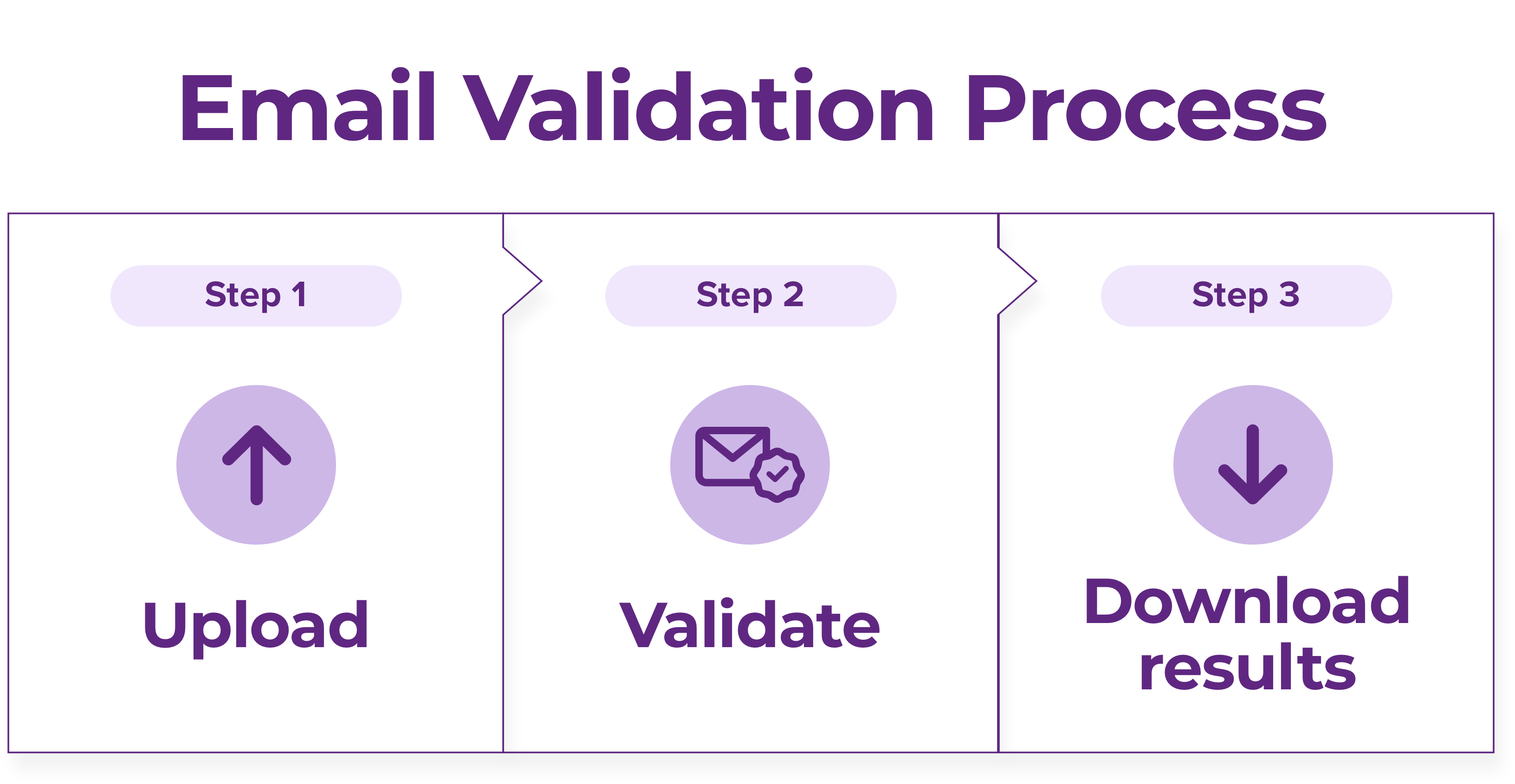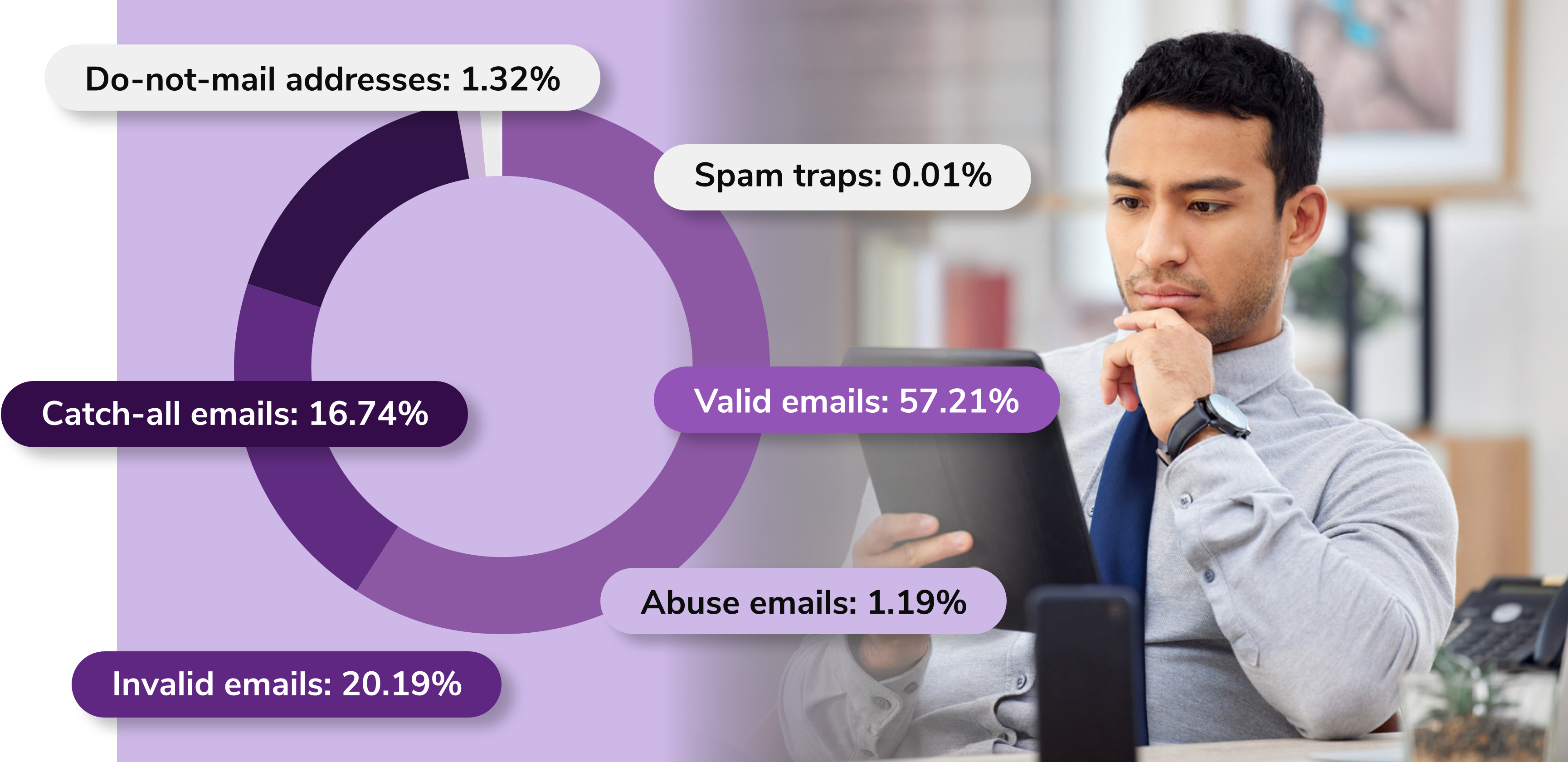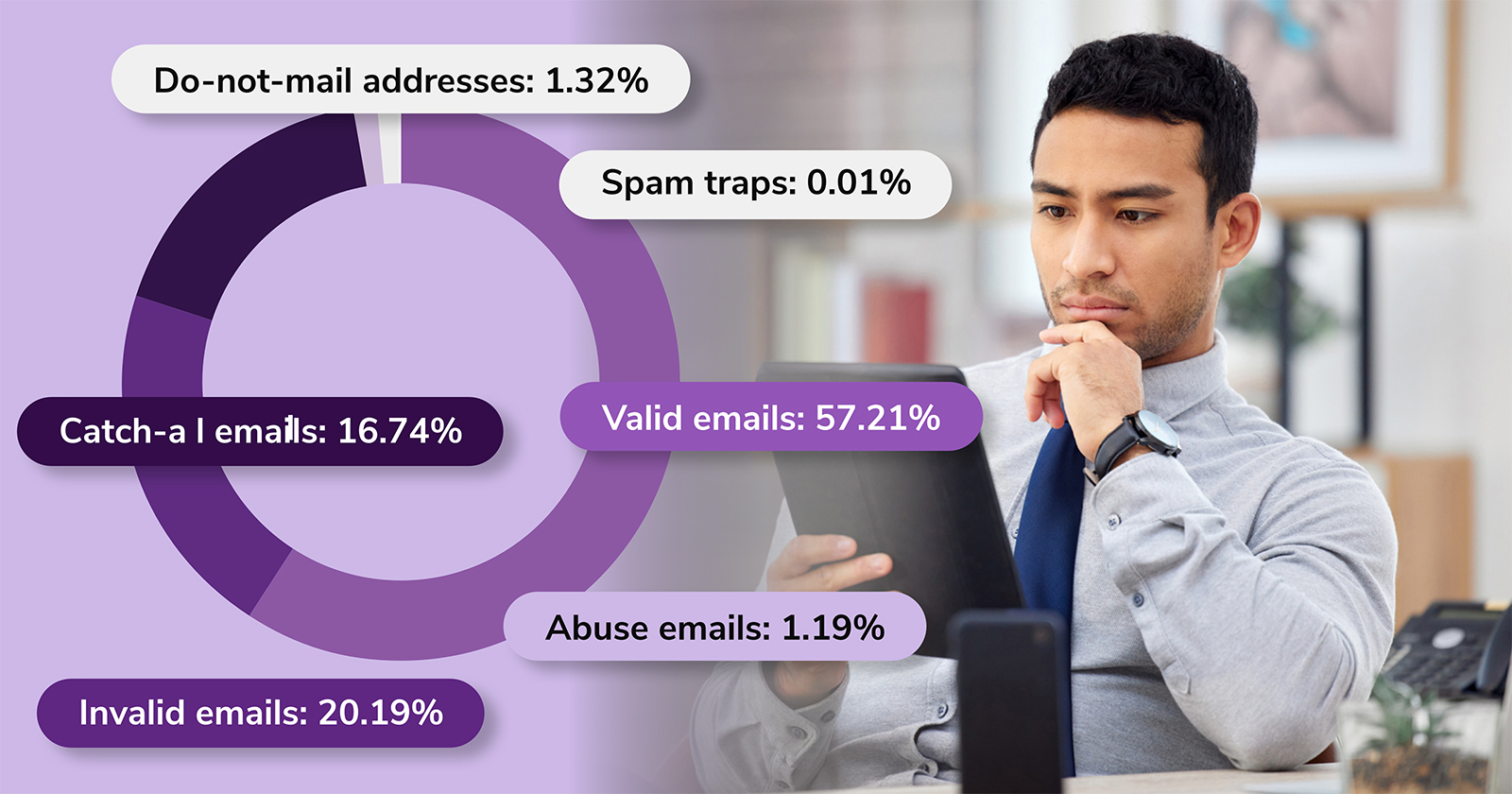When you’re reaching out to a mass email list with your business offering, the last thing you want is to see that your last email blast didn’t make it to the full audience you aimed for.
These email bounces waste time and money. But that’s just the tip of the iceberg.
A bounce rate higher than 2% can shatter your entire email marketing strategy by sabotaging your email deliverability.
In fact, according to marketing standards, you want your bounce rate to be as close to 0% as possible and never more than 2%.
See how many bounces your next campaign may get >>>
The good news? You can take steps to avoid this common problem for good and calibrate your campaigns for better email deliverability.
Read on to find out how bounces hurt your business and what you can do today to boost your email marketing success.
What Is A Bounce Rate?
Your bounce rate is the percentage of emails you send that bounce or do not make it to a recipient’s inbox.
There are two types of bounces – hard bounces and soft bounces – and each has a different effect on your email marketing campaign.
In both cases, however, your message won’t make it to the intended recipient.
What Is A Hard Bounce?
A hard bounce indicates a permanent issue with the email address.
It’s invalid or possibly never existed.
There’s no hope of your email getting through with that address, so make sure to remove it from your email list.
What Is A Soft Bounce?
A soft bounce happens when a temporary issue causes your email to not be delivered.
The mailbox was full, your email was too large, or the domain was down. Your email provider will keep trying to deliver your message, but it may end up permanently bouncing.
Make sure to remove permanent bounces from your database.
What’s Wrong With Getting Email Bounces?
Getting bounces is antithetical to email marketing because you’re sending your emails because you want a real person to open and read them.
It’s frustrating and demoralizing when that doesn’t happen.
- Bounces waste money. Email services charge based on the number of email addresses on your list, as well as how many emails you send. If you’re getting bounces, you’re pouring dollars down the drain.
- Bounces waste time. Why would you put all of this work into your emails only to have them result in a pile of bounces?
- Bounces affect your email deliverability. They send notice to Internet Service Providers (ISPs) that you’re likely a spammer and should be treated as such. Fewer people will see your emails because they’re now going to the junk folder.
Is It Possible To Have A 0% Bounce Rate?
Perfection is unattainable, but it is an ideal to strive for.
You may want to achieve a 0% bounce rate. However, there are many factors out of your control:
- A Full Mailbox: Your customer may have a valid email address, but their mailbox is full. This will result in a soft bounce.
- Issues With Email Providers: The contacts on your list rely on other email providers, so you can’t dictate what happens on their end.
- Glitches: You’ve likely witnessed an email that bounced for no discernible reason. Sometimes an unexplained phenomenon or glitch is to blame.
Any of these may be the culprit for a bounce.
They’re why the expected email marketing bounce rate benchmark is 2%, but it’s also why your target should be to reach perfection – 0%.
The concept of “aim small, miss small” applies. If you shoot for 0%, you may get close.
If you try to hit the benchmark, you may veer into the danger zone.
How To Reduce Your Bounce Rate
Now that you know the risks of a high bounce rate, let’s explore the most reliable ways to keep bounces at bay and help your emails reach the inbox.
 Image courtesy of ZeroBounce.Net, October 2023
Image courtesy of ZeroBounce.Net, October 2023Step 1: Validate Your Email List
You can remove invalid email addresses from your list once they bounce, but the damage is already done.
To keep your email deliverability high, you want to avoid bounces in the first place – and the most effective way to do it is by using an email validator.
An email validation service checks your email list for invalid email addresses so you can remove them before they cause harm.
The process is easy and fast – on average, you can verify 100,000 contacts in less than an hour.
Email databases decay at an average rate of 23% a year, so remember to validate your contacts at least once a quarter.
 Image courtesy of ZeroBounce.net, October 2023
Image courtesy of ZeroBounce.net, October 2023Step 2: Set Up An Email Validation API
After you verify your entire email list, you can go a step further and prevent it from acquiring bad data with an email validation API.
The API is your second layer of defense against bounces, working in real-time to protect the health of your email list.
Once you connect the API to your sign-up and registration forms, it blocks invalid emails right at the point of capture.
For instance, if someone mistypes an email, it prompts them with a message asking them to enter the right address. Aside from that, a trustworthy email validation API blocks bots and fake sign-ups, thus protecting your email deliverability.
Step 3: Remove Unengaged Subscribers From Your Email List
Building an email list takes effort, so many companies want to hold on to the email contacts they gather.
The bigger your list, the higher the ROI is the common mindset.
While having a large audience expands your reach, keeping unengaged subscribers in your database works against you.
First, people who never open your emails trigger ISPs that your content is irrelevant, so your emails start going to spam.
What’s more, some of your dormant subscribers may have abandoned their email addresses.
Email providers like Yahoo and Gmail regularly purge inactive email accounts, and that will result in a high bounce rate for you.
To avoid that, remove disengaged subscribers every three to six months. Your email list will be smaller, but you’ll build a vibrant, responsive community instead.
Step 4: Get Permission & Use Double Opt-In
Lawful and effective email marketing is permission-based.
Everyone on your email list should express consent to receive emails from you.
Inviting someone to sign up is fine, but adding them yourself isn’t.
To reduce your bounce rate and keep your email list healthy, also consider using the double opt-in sign-up method.
Anyone who signs up must click an automated link that is sent to their email. Without clicking that link, they won’t be added to your list.
Double opt-in decreases the number of fake sign-ups and helps you build a more engaged email list.
Setting it up takes only a few clicks within your email service provider.
Want To Reduce Your Bounce Rate Today?
With the latest innovations in email technology, halting a creeping bounce rate is easier.
Before you send your next email, check the health of your database and remove obsolete contacts today. Sign up for a ZeroBounce account and verify 100 email addresses for free – every month.
Before you send your next email, check the health
of your database and remove obsolete contacts today
The opinions expressed in this article are the sponsor's own.



